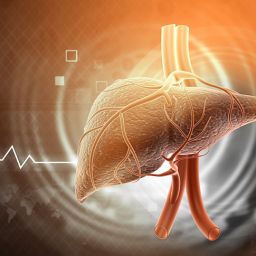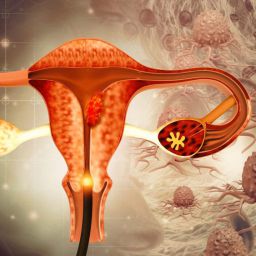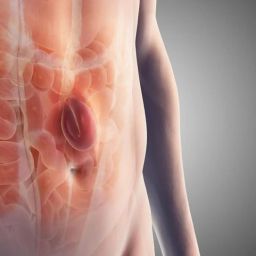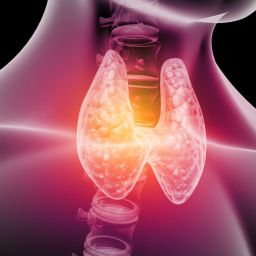
Before diving into the strategies for managing hernias at work, it’s important to understand the different types of hernias and how they might affect your daily life, particularly your job.
1. Inguinal Hernia
The most common type of hernia, an inguinal hernia occurs when part of the intestine or fatty tissue pushes through a weak spot in the abdominal wall or into the inguinal canal in the groin area. Sitting for long periods can increase pressure on the abdominal area, potentially aggravating the condition. Individuals with inguinal hernias may experience pain or discomfort in the lower abdomen or groin when bending, lifting, or sitting for extended periods.
2. Umbilical Hernia
An umbilical hernia occurs when tissue or part of the intestine pushes through the abdominal wall near the belly button. This type of hernia can cause swelling or a bulge in the abdominal area. Prolonged sitting, especially if the posture is poor or if there’s increased intra-abdominal pressure, can worsen the condition.
3. Hiatal Hernia
A hiatal hernia occurs when part of the stomach pushes up into the chest through the diaphragm. This type of hernia often causes symptoms such as acid reflux, heartburn, and chest discomfort, which can be aggravated by prolonged sitting or poor posture. In people with hiatal hernias, maintaining a healthy posture and taking steps to alleviate pressure on the abdomen are crucial.
Challenges of Managing a Hernia in a Desk Job
Working a desk job can be physically demanding for people with hernias. Here are some of the main challenges:

- Prolonged Sitting: Sitting for long periods without movement can increase intra-abdominal pressure and worsen hernia symptoms. This is particularly true for people with inguinal or umbilical hernias.
- Poor Posture: Many desk jobs require workers to sit hunched over or slouched. Poor posture places additional pressure on the abdomen, which can contribute to discomfort in people with hernias, especially those with hiatal hernias.
- Lack of Physical Activity: Desk jobs often require little movement, and a sedentary lifestyle can increase the risk of obesity, constipation, and general muscle weakness, which can exacerbate hernia symptoms.
- Repetitive Movements: Activities such as lifting, bending, or twisting at a desk can strain the abdominal muscles and worsen the hernia or cause discomfort.
Strategies for Managing Hernia in a Desk Job
While desk jobs present unique challenges, there are several ways to manage hernias effectively while still maintaining a productive work life. Here are practical strategies for managing a hernia in the office setting:
1. Ergonomics: Adjusting Your Workspace
One of the most important strategies for managing a hernia at work is adjusting your workspace to promote good posture and reduce pressure on the abdomen. Here’s how you can optimize your desk setup:
- Chair Selection: Choose an ergonomic chair that provides adequate lower back support. The chair should support the natural curve of your spine, ensuring that you maintain proper posture while sitting. It’s important that your feet are flat on the floor, with your knees at a 90-degree angle to avoid putting undue strain on your abdominal muscles.
- Desk Height: Your desk should be at the appropriate height to keep your elbows bent at a 90-degree angle while typing. The height of your desk should also allow you to sit up straight without hunching over.
- Monitor Placement: Your computer screen should be at eye level, reducing the need to strain your neck or slouch forward.
- Keyboard and Mouse Position: Keep your keyboard and mouse at a height that allows your forearms to remain parallel to the floor, minimizing tension in your shoulders and wrists.
2. Practicing Good Posture
Maintaining good posture is crucial for reducing hernia symptoms in a desk job. Proper posture minimizes pressure on the abdomen and the hernia site. To maintain good posture:
- Sit all the way back in your chair, ensuring that your back is supported.
- Keep your shoulders relaxed and avoid hunching or rounding your back.
- Avoid crossing your legs, as this can disrupt your body’s alignment and place unnecessary strain on the abdominal muscles.
- Keep your head and neck aligned with your spine. Your ears should be in line with your shoulders, not forward.
3. Taking Frequent Breaks
Sitting for long periods is one of the most significant risk factors for exacerbating hernia symptoms. To manage a hernia, it’s important to take frequent breaks and incorporate movement throughout your day. Here’s what you can do:
- Stand up regularly: Aim to stand up and walk around every 30 minutes. Even brief moments of standing or walking can relieve pressure on the abdomen and prevent discomfort.
- Stretching: Incorporate stretching exercises into your routine to relieve muscle tension, improve flexibility, and reduce pressure on your abdominal muscles. Simple stretches, such as standing and reaching overhead or twisting gently from side to side, can be beneficial.
- Walk during breaks: Use your lunch break or other breaks as an opportunity to walk around, even if it’s just for a few minutes. Walking promotes circulation, which can reduce inflammation and discomfort related to hernia issues.
4. Exercise and Strengthening
Incorporating regular exercise into your routine can help strengthen the abdominal muscles and improve your overall health. However, it’s important to approach exercise carefully and avoid movements that might strain the hernia site. Here’s how to exercise safely with a hernia:

- Core Strengthening: Focus on exercises that strengthen your core muscles, which provide support for your abdomen and back. Gentle core-strengthening exercises, such as pelvic tilts, leg raises, and bridge lifts, can help stabilize the area around the hernia.
- Low-Impact Exercises: Engage in low-impact activities such as walking, swimming, or cycling to maintain fitness without putting strain on the hernia. These activities help maintain circulation and overall health.
- Avoid Heavy Lifting: Avoid exercises that involve heavy lifting or straining, such as squats with weights or deadlifts. These movements can increase intra-abdominal pressure and worsen the hernia.
5. Diet and Nutrition
A healthy diet plays an important role in managing a hernia, especially when it comes to preventing issues like constipation, which can strain the abdominal muscles. To reduce the risk of discomfort:
- Eat high-fiber foods: A diet rich in fiber can help prevent constipation and reduce strain during bowel movements. Incorporate fruits, vegetables, whole grains, and legumes into your diet.
- Avoid heavy meals: Large meals can increase abdominal pressure and worsen symptoms. Aim for smaller, more frequent meals throughout the day.
- Stay hydrated: Drinking plenty of water is crucial for overall health and can help keep your digestive system functioning smoothly.
- Avoid trigger foods: If you have a hiatal hernia, certain foods that trigger acid reflux, such as spicy foods, caffeine, and alcohol, should be avoided.
6. Managing Stress
Stress can exacerbate the symptoms of a hernia, particularly those involving the stomach and digestive system. Stress may lead to muscle tension and digestive issues, such as acid reflux, which can worsen the discomfort associated with a hernia. To manage stress:
- Practice relaxation techniques: Techniques such as deep breathing, mindfulness meditation, and progressive muscle relaxation can help reduce stress and promote relaxation.
- Take breaks: If you’re feeling stressed at work, take a moment to step away from your desk, stretch, and practice deep breathing exercises.
- Maintain a work-life balance: Try to create a balance between your work and personal life to reduce stress and improve your overall well-being.
7. Consulting with a Healthcare Provider
Lastly, if you have a hernia and are working a desk job, it’s crucial to stay in regular contact with your healthcare provider. Your doctor can help monitor your condition, offer personalized advice on managing symptoms, and recommend treatments if necessary. In some cases, surgical intervention may be necessary to repair the hernia, especially if symptoms persist or worsen.
Managing a hernia while working a desk job requires careful attention to your posture, workspace, and lifestyle. With the right strategies in place, such as maintaining good ergonomics, taking breaks, exercising safely, and following a healthy diet, you can reduce discomfort and prevent complications. Remember, every individual’s experience with a hernia is unique, so it’s essential to work closely with your healthcare provider to ensure you’re on the right path to managing your condition effectively.
By incorporating these strategies into your daily routine, you can continue to be productive at work while minimizing the impact of a hernia on your health. With proper management and self-care, individuals with hernias can continue to lead a fulfilling and active professional life.















